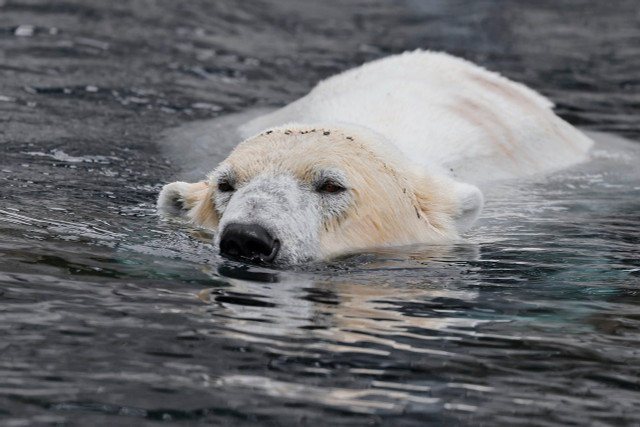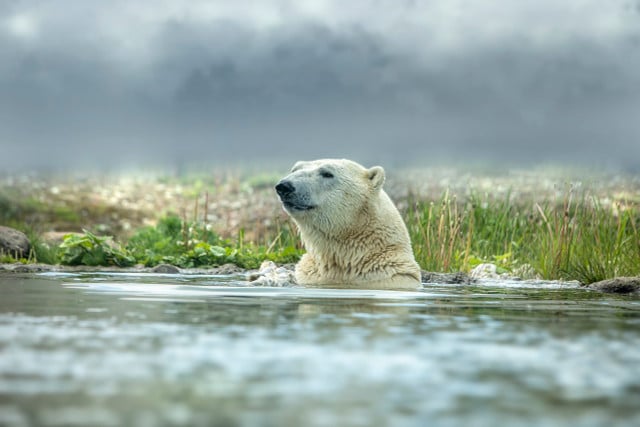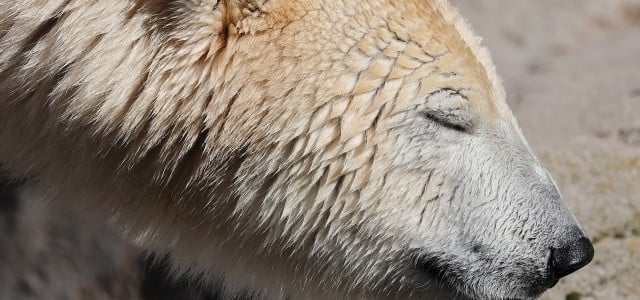Polar bears are vulnerable to extinction due to climate change. But how many polar bears are left? Find out if these majestic creatures are officially endangered.
Polar bears, often used as symbols of the effects of climate change, face an uncertain future. As their natural habitat rapidly diminishes, it’s important to address the question of how many polar bears are left.
Although not officially classified as endangered, the current state of polar bear populations and their conservation status requires a closer examination. In this article, we will delve into the challenges they face for survival and confront the uncomfortable truths about their declining numbers.
How Many Polar Bears Are Left?
Estimating the number of polar bears left is notoriously difficult. For one, they live in the Arctic, a place with few people and prone to extreme weather, so getting out to collect data is a challenge in itself. This is only exacerbated by the fact that they are almost entirely white and solitary creatures living in this expansive area, which means finding them without the proper equipment can be like looking for needles in haystacks.
However, we do have a very rough estimate. According to the International Union for Conservation of Nature (IUCN) Red List, the global population of polar bears is proposed to be around 22,000 to 31,000 individuals. While these numbers have been estimated using the very latest methods and data, the wildly varied margin of error gives an idea of just how difficult it is to get accurate population estimates of polar bears.
This data illustrates a definite decline in polar bear populations over the past 50 years. However, a 2014 IUCN map does seem to show some good news: overall trends for some subpopulations that were previously declining but are now shown to be stable.
Conservation Status of Polar Bears

While polar bears are not currently classified as endangered, they are listed as “vulnerable” on the IUCN Red List of Threatened Species, meaning that they are at a high risk of becoming endangered in the near future.
The IUCN Red List uses a set criterion to consider many things when assessing the conservation status. These include elements such as the size and trend of the population, the species distribution and habitat, and how much it is affected by human activities, such as hunting or habitat destruction.
Based on this assessment, each species is put into one of several categories:
- Extinct: the species is no longer alive.
- Extinct in the wild: Only survives in captivity, in cultivation, or outside its native range.
- Critically endangered: in a very critical state.
- Endangered: very likely to become extinct in the wild.
- Vulnerable: considered to be at high risk of extinction without further human intervention.
- Near threatened: close to being endangered soon.
- Least concern: unlikely to become endangered or extinct soon.
As you can see, “vulnerable” is just one step down from the classification of “endangered”. Furthermore, this classification still specifies that if nothing is to be done about the situation as it currently stands, then polar bears are likely to become endangered once again.
It’s important to note that the lack of a definitive population estimate for a species makes it harder to figure out how much of it is being saved. Some species may even be listed as “data deficient” on the IUCN Red List if there is not enough information to make a decision about their status. Further research and data collection may be needed to figure out what the species needs to be saved and how to do it.
Conservation Efforts
The conservation status of polar bears is a complex issue that requires careful consideration and action from individuals, organizations, and governments. Today, climate change is the biggest threat to polar bears. As the ice disappears, the bears are forced to spend more time on land, where they have less access to food and are vulnerable to a variety of other dangers.
These dangers include hunting and acts of self-defense by people living close to areas polar bears have been forced to populate. More general habitat destruction, such as that of their prey, caused by oil and gas exploration and development can also severely disrupt their habitat. It is not possible for these conditions to not affect polar bear populations.
The good news is that conservation efforts are underway. For example, the five countries where polar bears are found have all signed what is known as the Polar Bear Agreement. This agreement aims to conserve polar bear populations and their habitats through measures such as reducing hunting, protecting important habitats, and monitoring populations.
Other examples include the creation of protected areas and national parks in Arctic regions, such as Svalbard, Greenland, and Wrangel Island, where polar bears and other species can live without being disturbed. Despite the killing of polar bears not being illegal, many countries have laws and regulations to limit the hunting and trade of polar bears and their parts.
In the last few years, organizations like the Arctic Council and the United Nations have been working on international agreements and policies to reduce greenhouse gas emissions and address climate change. This is indispensable for the survival of polar bears and other Arctic animals.
Misconceptions About How Many Polar Bears Are Left



While there is good news, it is important to dispel any misconceptions that polar bears are safe and thriving. It’s important to recognize the seriousness of their situation so that they can have a chance at survival. Here are three of the most common misconceptions about polar bear populations and endangerment:
- Polar bears are not really vulnerable anymore and there’s with no immediate threat to their survival: While it is true that some polar bear populations have stabilized, overall, polar bears are still classified as vulnerable to extinction. This means that while there are some signs of improvement in some regions, continued action to save the Arctic ecosystem is needed to ensure their continued survival.
- Hunting, poaching, and tourism are not significant threats to the bears: Although hunting and poaching have been significantly reduced in many areas of the Arctic, hunting does still occur in some regions under strict regulation. For example, the polar bear is a big part of Canada’s Arctic ecosystem and the culture of northern residents, especially Indigenous people. Polar bears are monitored by the people and are hunted in a way that keeps subpopulations healthy while allowing Indigenous peoples to hunt bears for the protection of human life and property. Unregulated hunting poses a significant threat to the bears.
- The bears can easily adapt to new habitats as their ice melts: This is false. The bears are highly specialized for life on sea ice, and as the ice disappears, they have fewer places to hunt, rest and mate. The loss of Arctic sea ice has progressed faster than most climate models had predicted, leading to extended fasting for the species, increased reproductive failure, and starvation in some areas. Polar bears are essential to maintaining ecosystem balance in the Arctic region and are important to the livelihoods of Indigenous Peoples. Along with sea ice loss, potential threats to the species include pollution, resource exploration, and habitat change due to development.
Some think that there is too much focus on polar bears as a symbol of climate change, but spreading misinformation is not the solution to this problem. Polar bears are an important species, but they are only one part of the Arctic ecosystem. Other species, like walruses and seals, are also being threatened by climate change, and the entire Arctic ecosystem is changing.
Remember, conservation efforts should focus on saving entire ecosystems, not just individual species. This includes preserving habitats, controlling human activities, and fixing the root causes of climate change.
In short, understanding the real threats facing polar bears, and the fact that they are indeed part of a larger ecosystem vulnerable to extinction, is essential. While efforts are being made to protect them as well as their fellow habitat inhabitants, more needs to be done to address the root cause of their decline and to protect them before it’s too late.
Learn more about Earth’s endangered species:
- Are Praying Mantises Endangered? No—But People Think They Are
- Why Are Tigers Endangered? The 4 Major Threats
- Are Honeybees Endangered? How to Help the Honeybee
- Why the Mexican Gray Wolf is Endangered and How You Can Help
- Why Are Red Pandas Endangered & How Can We Help?
- Are Narwhals Extinct or Endangered? How Can You Help?
- Are Bears Endangered? These 3 Species Are
- Are Sea Lions Endangered? Threats & What You Can Do
- Endangered Trees: 10 At-Risk Species
- The 15 Most Endangered Animals in America
Read more:
- The 15 Most Endangered Animals in America
- These Are the 9 Most Dangerous Animals in Canada
- Conservation vs. Preservation: Differences & Similarities
Do you like this post?







